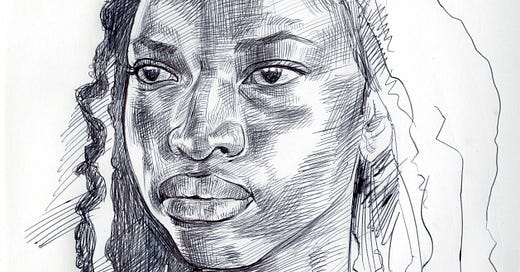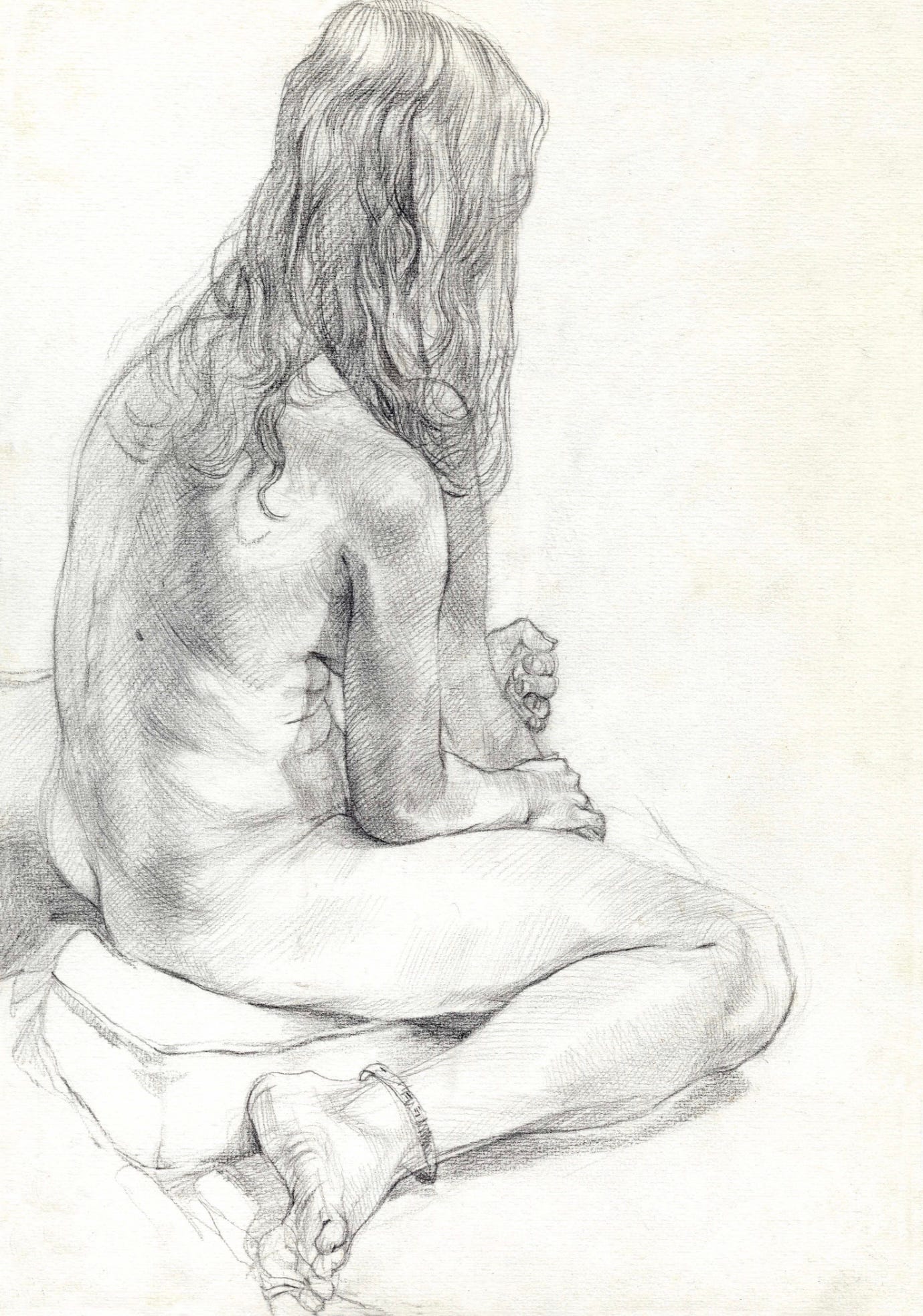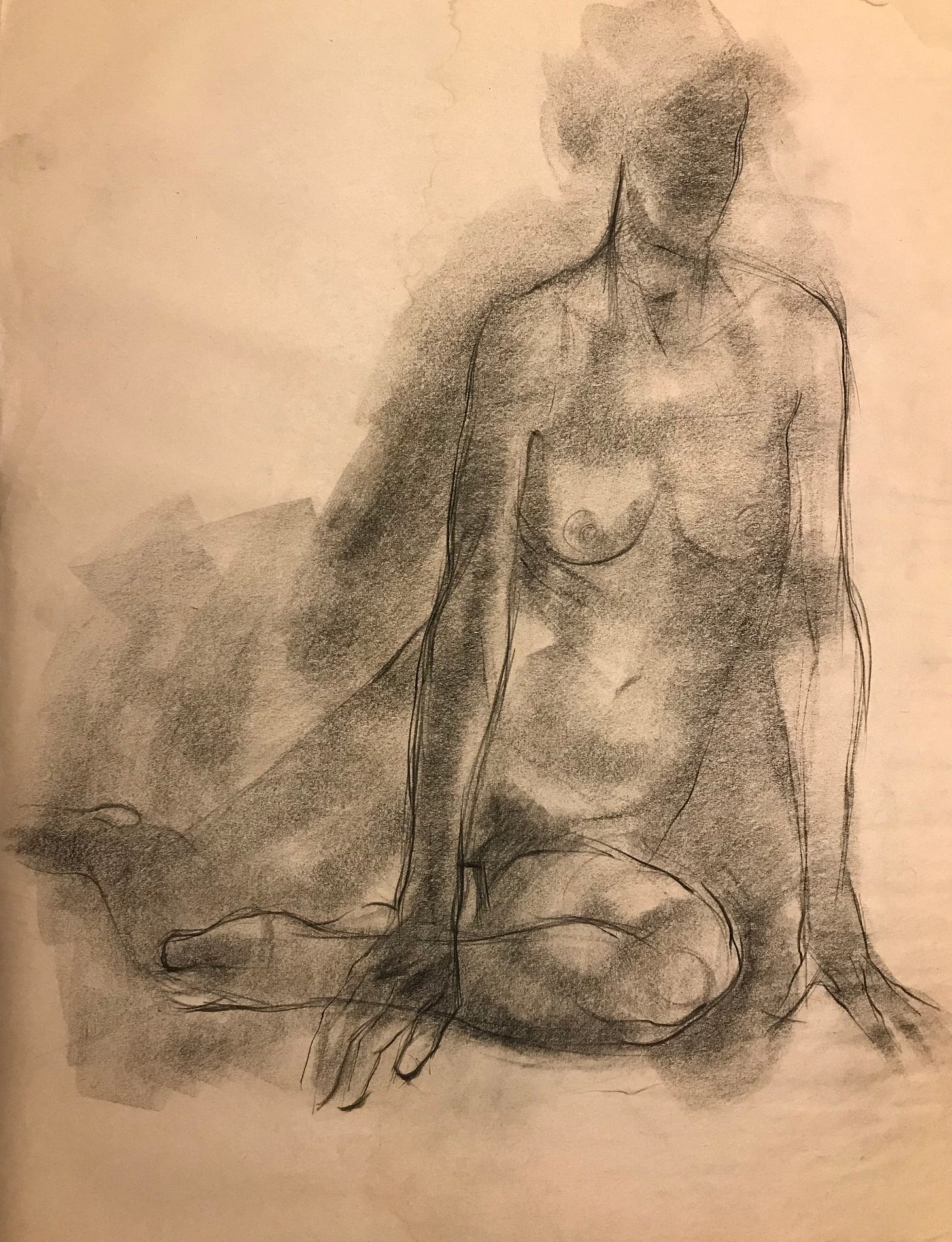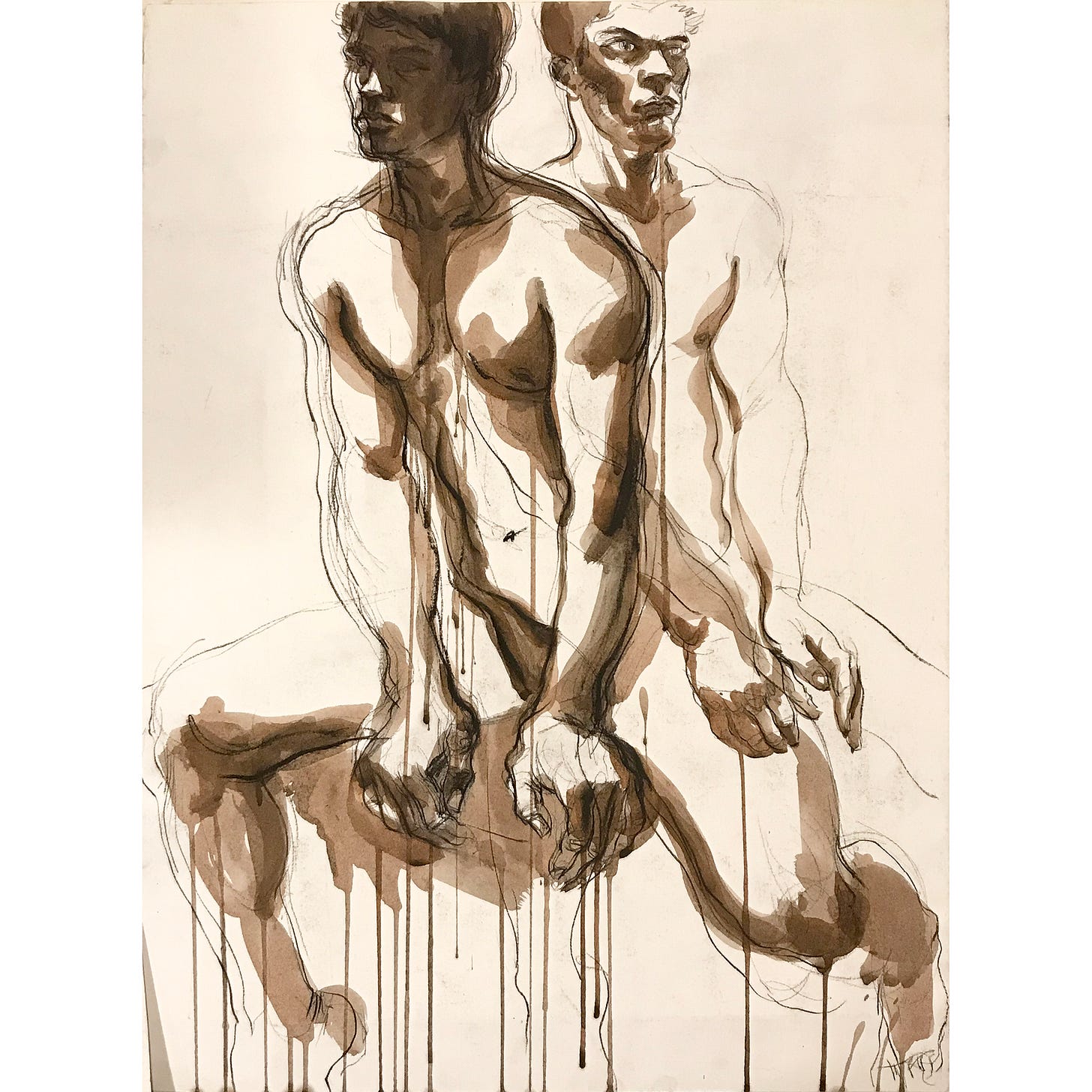In a meeting this week I was introduced to a ‘Law’ about meetings and it resonates with life drawing in the studio. Parkinson’s Law was an observation about how people use time for a task. In 1955, naval historian C. (Cyril) Northcote Parkinson wrote an article in the Economist offering two observations that have been called Parkinson’s Law. The first is what I experience teaching drawing…
Work expands so as to fill the time available for its completion.
How all of us manage our time is the stuff of self help books and unheeded advice from parents, teachers, and employers. There are a number of corollary observations about how tasks are performed or under performed in relationship to time. In drawing, filling time and not using it well is my greatest enemy.
Drawing takes time, and that is its secret weapon for capturing attention and discovering meaning. But we have placed the task of drawing into the menial category of repetitive factory work, insert the A.I. ‘time saving’ robot apps here. The length of the pose/drawing is a balance between the approach of the person drawing in service to the purpose of the work. The dance between speed and expression has no ideal ratio as there are too many variables, working with a group of students I play with the length of the model’s pose like I’m tuning in a radio signal.
In studio we were working on 2 minute poses and by the 3rd drawing everyone was capturing the entire pose, but there wasn’t enough time to be considerate of expression and emphasis. I moved to 5 minutes and the wheels fell off. We did a couple and then it was intervention time—we had to stop killing trees. What they were missing was the purpose in the drawings, I had misread their urgent 2 minute drawings as capturing the essential message of the problem we had set for this week and they were actually just hanging onto a moving vehicle for dear life. At 5 minutes it was like they had wandered off the trail and were lost in the woods.
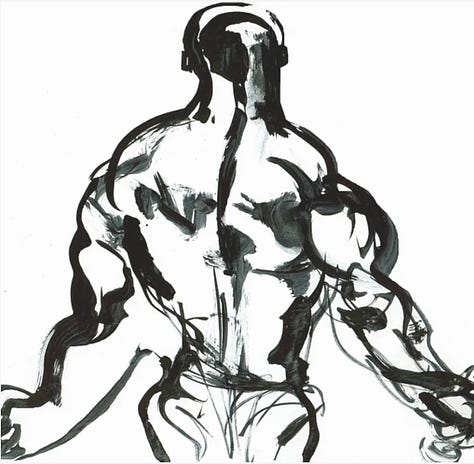
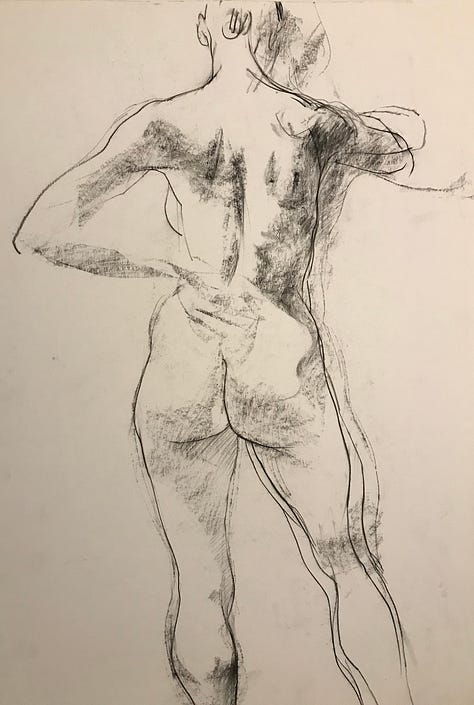

Drawing needs practice but it also needs purpose and urgency. The time spent—perfect word, you are spending/investing/giving up an amount of time—-consciously. The drawing above on the left was probably 30 seconds, mostly from memory as I captured a dancing bodybuilder warming up backstage before his entrance to compete at the Arnold Schwarzenegger Classic. The intent was to express the dynamic of his body. The centre drawing was probably 2-3 minutes—it was a timed drawing and I knew I wanted to capture the shadows on the back, so I proportioned my time to achieve that. The final sketchbook drawing is at the train station, where I have no control over time and I must zero in on what I want immediately.
Time + Purpose + Urgency.
Time does flow, move, and stutter when we actually become conscious of it, but in drawing when I have the model do a 20 minute pose, for some, it is an invitation to be carried along with the current of time and the habits of their hand, but you have to fight the current to draw with purpose. You need to be inside the process and directing it, not just following a well trod path. I can see Parkinson’s Law in action as a drawing just stretches across the time given with little or no effect. It might as well be done by a robot because it is about getting it done, glue all the parts down on the paper.
We pay for so much in this culture with our attention, and receive so little of value in return. I know that directing our attention to a purpose as we spend time drawing can lead to real rewards in our life. I can argue, cajole, and rail in the studio about all the ways to spend time wisely, but it seems the 70 year old observation from Parkinson was heeded at least for this week’s session. Time will tell.

